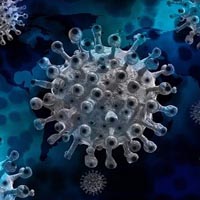 Smart Citations
Smart CitationsSee how this article has been cited at scite.ai
scite shows how a scientific paper has been cited by providing the context of the citation, a classification describing whether it supports, mentions, or contrasts the cited claim, and a label indicating in which section the citation was made.
mRNA vaccines: Why and how they should be modified
The COVID-19 pandemic has stimulated the production of different therapeutic approaches for the resolution of coronavirus infections. On one hand, nanobiomolecules have been proposed as bait material for viruses,1,2 on the other hand unconventional messenger RNA vaccines have been produced like SARS-CoV-2 mRNA vaccines (BioNTech/Pfizer BNT162b2 and Moderna mRNA-1273). [...]
How to Cite
PAGEPress has chosen to apply the Creative Commons Attribution NonCommercial 4.0 International License (CC BY-NC 4.0) to all manuscripts to be published.

 https://doi.org/10.4081/jbr.2021.10072
https://doi.org/10.4081/jbr.2021.10072




